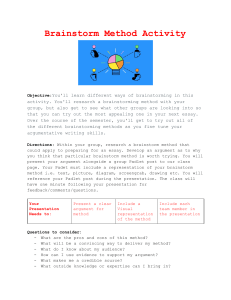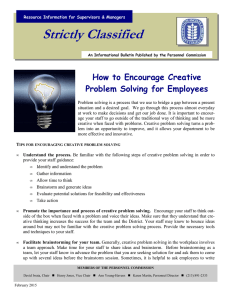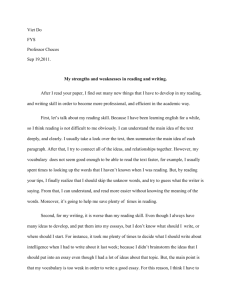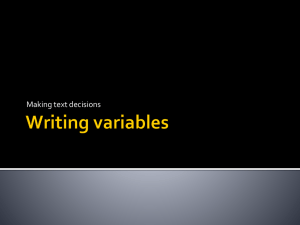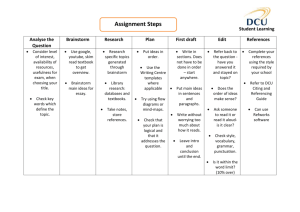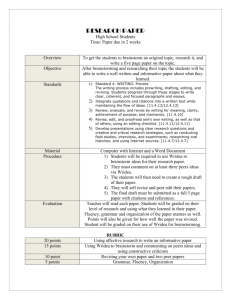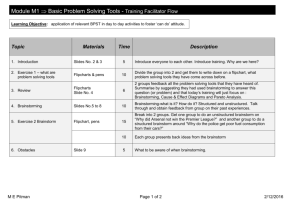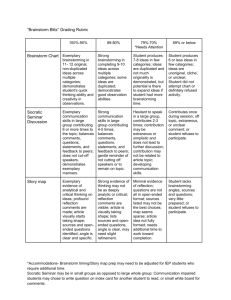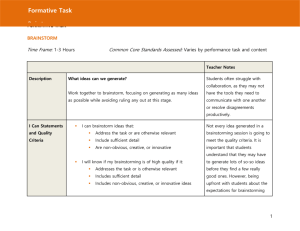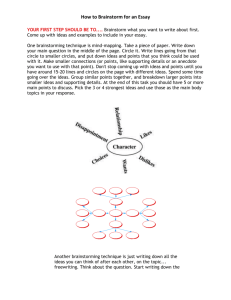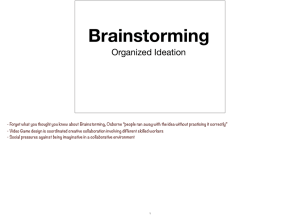Small Group Collaboration and Brainstorming
advertisement
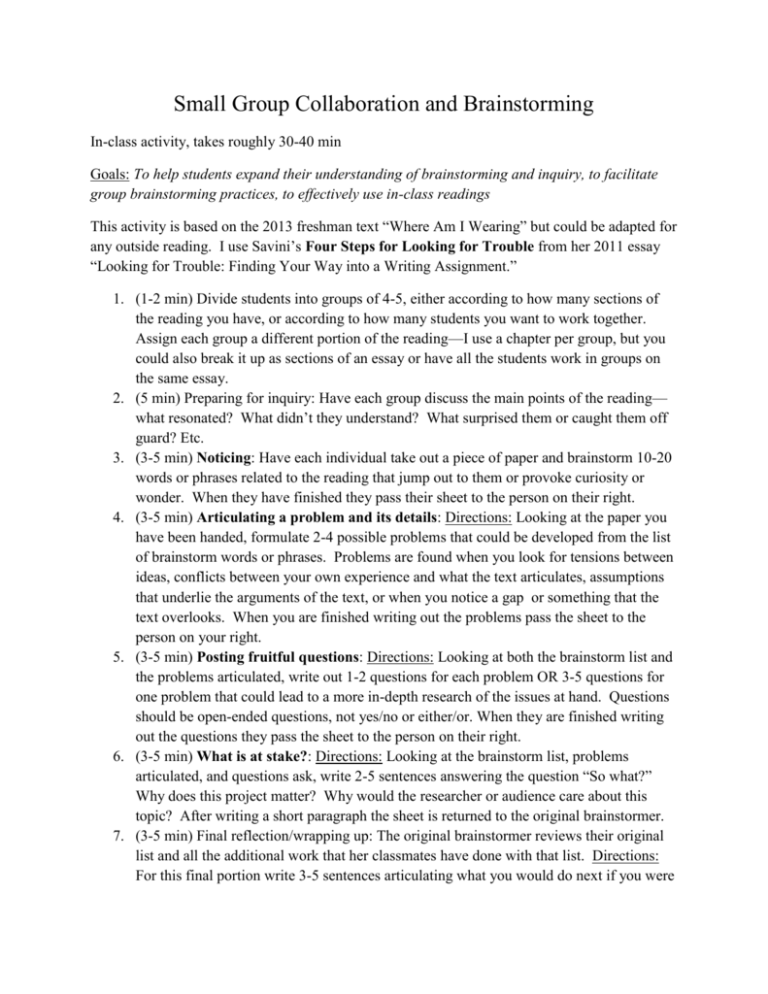
Small Group Collaboration and Brainstorming In-class activity, takes roughly 30-40 min Goals: To help students expand their understanding of brainstorming and inquiry, to facilitate group brainstorming practices, to effectively use in-class readings This activity is based on the 2013 freshman text “Where Am I Wearing” but could be adapted for any outside reading. I use Savini’s Four Steps for Looking for Trouble from her 2011 essay “Looking for Trouble: Finding Your Way into a Writing Assignment.” 1. (1-2 min) Divide students into groups of 4-5, either according to how many sections of the reading you have, or according to how many students you want to work together. Assign each group a different portion of the reading—I use a chapter per group, but you could also break it up as sections of an essay or have all the students work in groups on the same essay. 2. (5 min) Preparing for inquiry: Have each group discuss the main points of the reading— what resonated? What didn’t they understand? What surprised them or caught them off guard? Etc. 3. (3-5 min) Noticing: Have each individual take out a piece of paper and brainstorm 10-20 words or phrases related to the reading that jump out to them or provoke curiosity or wonder. When they have finished they pass their sheet to the person on their right. 4. (3-5 min) Articulating a problem and its details: Directions: Looking at the paper you have been handed, formulate 2-4 possible problems that could be developed from the list of brainstorm words or phrases. Problems are found when you look for tensions between ideas, conflicts between your own experience and what the text articulates, assumptions that underlie the arguments of the text, or when you notice a gap or something that the text overlooks. When you are finished writing out the problems pass the sheet to the person on your right. 5. (3-5 min) Posting fruitful questions: Directions: Looking at both the brainstorm list and the problems articulated, write out 1-2 questions for each problem OR 3-5 questions for one problem that could lead to a more in-depth research of the issues at hand. Questions should be open-ended questions, not yes/no or either/or. When they are finished writing out the questions they pass the sheet to the person on their right. 6. (3-5 min) What is at stake?: Directions: Looking at the brainstorm list, problems articulated, and questions ask, write 2-5 sentences answering the question “So what?” Why does this project matter? Why would the researcher or audience care about this topic? After writing a short paragraph the sheet is returned to the original brainstormer. 7. (3-5 min) Final reflection/wrapping up: The original brainstormer reviews their original list and all the additional work that her classmates have done with that list. Directions: For this final portion write 3-5 sentences articulating what you would do next if you were planning on taking this brainstorming exercise to the next level. Where would you look for resources? Who would you talk to? What other implications might you need to consider in order to write effectively about this topic? It is also appropriate at this time to reflect on what direction your classmates took your original ideas. Do you agree with their choices? How would you have done this differently? 8. (3-10 min) Full class wrap-up: Have the students return to their seats/rejoin the class and open discussion of both the results of the activity AND the process. What was hard? What was easy? What was unexpected? How did your fellow students help you to think differently about your topic? Share examples of particularly interesting or provocative problems, questions, or explanations of what is at stake. Rebecca Wiltberger 9/13/13

